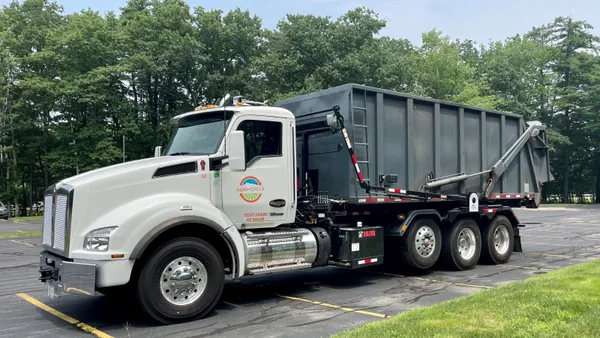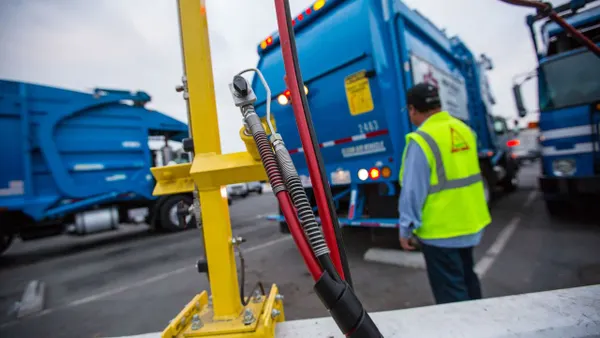Dive Brief:
- Urban planning that incorporates widespread electrification and carbon-sequestration while increasing density is the best way cities can slash emissions within the next decade to limit global warming, according to authors of the highly anticipated United Nations climate change mitigation report released Monday.
- The report, the third release from the Intergovernmental Panel on Climate Change's Sixth Assessment Report, addresses buildings, transportation, and energy systems, as well as entire urban systems. It also delves into the importance of “using materials more efficiently, reusing, recycling,” as well as minimizing waste and encouraging circular material flows in the industrial sector, which are “currently under-used in policies and practice.”
- “Without a strengthening of policies beyond those that are implemented by the end of 2020, GHG emissions are projected to rise beyond 2025,” the IPCC laid out to policymakers. Some of the authors said the report ought to gravely reinforce to leaders the importance of making changes immediately, even though the information and strategies it contains largely are not new and the IPCC isn't meant to be a prescriptive body.
Dive Insight:
Global greenhouse gas emissions must stop rising by 2025 to limit warming to the 1.5 degrees Celsius threshold, the target of the Paris Agreement, according to scientists. It's long been known that urban centers play an important role in mitigating climate change. The IPCC counts at least 826 cities that have adopted zero-emissions targets, but everyone must get more aggressive in implementing such strategies to more rapidly slash emissions, UN leaders and report authors say.
"It is not a pretty picture," said United Nations Environment Programme Executive Director Inger Andersen in a press conference Monday, noting that the last two decades saw the highest increase in emissions in human history. "Half measures will not halve greenhouse gas emissions by 2030, which is what we need to do. And we all need to go in on this. The IPCC tells us that we have the knowledge and the technology to get this done."
Regarding the need to cut emissions associated with production and use of chemicals, the report highlights increasing plastics recycling as a key part of transitioning to a life cycle approach. To lower buildings’ carbon footprints, it notes the potential of recycling and reusing construction materials. Separately, among many options for mitigation, the report calls out reducing food waste and loss as becoming “increasingly cost effective” and “generally supported by the public.”
“As the IPCC says, cities can reduce GHG emissions significantly, but this requires systemic transformation: circular economy, inclusion and equity, and innovative technologies are some of the key elements in conjunction with other strategies that can contribute towards low and net-zero urban development,” wrote Mariel Vilella, director of the global climate program at the Global Alliance for Incinerator Alternatives, in a response to the IPCC report. “This is precisely where zero waste strategies can make a difference.”
Even with the more solutions-oriented nature of this latest report, the IPCC's charge is not to tell governments exactly how to act to lower emissions. The organization does, however, lay out many important options. Regarding energy systems, for example, the report broadly calls for widespread electrification and improved energy efficiency while acknowledging that electric energy must itself come from renewable sources.
According to Paulina Jaramillo, a professor of engineering and public policy at Carnegie Mellon University and an author of the transportation-focused chapter of the report: "It's not like there's some novel solution that no one had thought about 15 years ago."
"Unfortunately, there's nothing completely new that no one saw coming. It's just we really need to start implementing these things," Jaramillo said. Solutions to cut transportation emissions, according to the report, include electrifying public and private vehicles and designing urban environments that reduce the distances that people and vehicles must regularly travel.
City approaches to reducing emissions will depend on whether it’s a new or rapidly growing city, or a more established city, said Karen Seto, a professor of geography and urbanization science at the Yale School of the Environment, who co-led the section of the report on urban mitigation. Regardless, one of the most achievable and impactful strategies is strategic infilling, or increasing population density so that people are less reliant on motorized transportation to get to where they work, for instance, she said.












